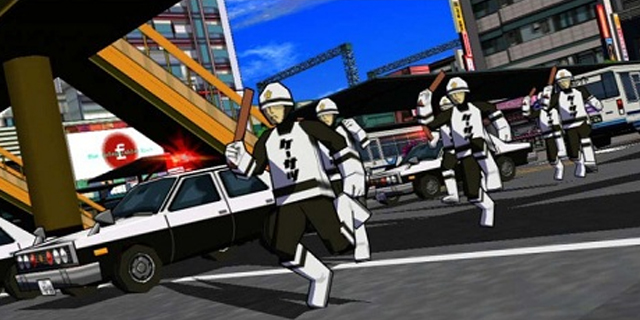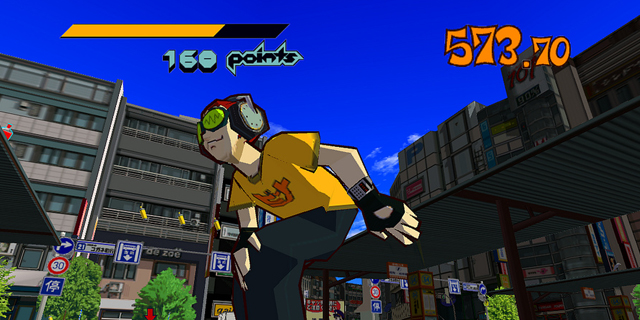
The release of Jet Grind Radio on the Dreamcast was the kind of game that defined that system and that era in gaming for Sega. It was almost a novelty; a flashy, cartoonish presentation and mechanics that, at the time, seemed fresh. It represented a time in the industry when games that were heavily focused on style were dominate. That time, however, has passed, and Sega’s HD re-release of that classic title shows it has earned its place in history, but is merely a relic of its time.
It’s safe to say that Jet Set Radio’s visuals were often considered quite stunning during its initial release, but sadly that unique style has not aged as gracefully as one might think. Thankfully, the HD makeover has made this gem shine again, showcasing its style and flair as best as today’s hardware can allow. The game is full of plenty of colorful characters and environments to explore; on top of that, the fantastic soundtrack remains intact, making JSR’s presentation easily the best part of this re-release.
The gameplay is relatively simple at first. You are tasked with going around levels and spray painting certain targets before the time limit runs out. Each level usually has its fair share of enemies waiting to stop you no matter what, including groups of cops, rival gang members, and even heavy artillery such as tanks and helicopters. You’ll also need to keep a constant eye on your spray can gauge; as soon as you run out, you’ll need to track down more cans scattered around the city.

It wasn’t long before I realized the horrible truth I was almost afraid to admit: Jet Set Radio has not aged well at all. There are many factors that helped make this realization possible, but a lot of it hit as soon as I was able to control the character. The controls themselves always took a little getting used to on the Dreamcast, but attempting to play this game now is almost nightmarish. The basic controls function okay when you’re simply skating along and tagging, but when you are required to jump and grind on rails with any amount of precision, the problems truly set in.
Not only do a lot of the controls feel clunky and don’t allow for the easy movements you might expect from a game of this nature, the camera wants to make sure that it interferes whenever possible. Again, during basic movements, it tends to be reliable, but as soon as you are attempting to jump and grind on a rail to the roof of a building or make any kind of subtle movements, the camera might get stuck in a wall or suddenly become uncooperative.
It is satisfying to be able to pull of cool tricks or hit a bunch of tags at once, but there will always be something to stop that momentum short. If it’s not awkwardly falling off the ledge of a building, then you’ll most likely run into an enemy at just the wrong time or run out of spray paint cans at the worst possible opportunity. This is a game that is worth admiring for its concept more than its execution.
While it’s easy to admire Sega for bringing back a beloved game from the past with a fresh coat of paint, there’s no real reason to play Jet Set Radio. Those who have fond memories of the Dreamcast and this game in particular may use this as an excuse to revisit what they consider to be an old favorite, but you’ll find nothing here but frustration. The sad truth is that some games are just better off left in the past.
Pros: Colorful graphics and environments, fantastic soundtrack
Cons: Awful camera, clunky controls, bad mechanics that interfere with the flow of gameplay



















